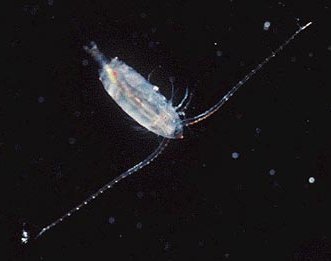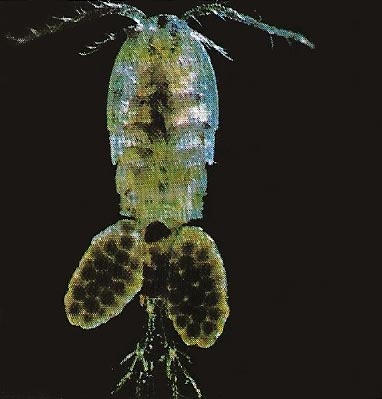copepod

Copepod. Image credit: NASA/JPL.

Both fresh and salt waters throughout the world may team with the microscopic Cyclops and its related species which are members of the crustacean sub-class Copepoda. A female is seen here bearing a pair of sacs filled with eggs. Cyclops has a single eye – from which it is named – two pairs of thoracic limbs for feeding and four for swimming. There are two pairs of antennae which are sensitive to touch and chemicals.
A copepod is any of the roughly 7,500 species of marine or freshwater crustacea of the subclass Copepoda. Copepods are possibly the most numerous type of animal in the world and are a major component of the ocean food chain. Some live as parasites, especially on fish. Their segmented, cylindrical bodies have a single median eye and no carapace. Copepods are typically 0.5–2 millimeters (0.02–0.08 inches) in length, although some parasitic forms may be more than 30.5 centimeters (1 foot) long.


